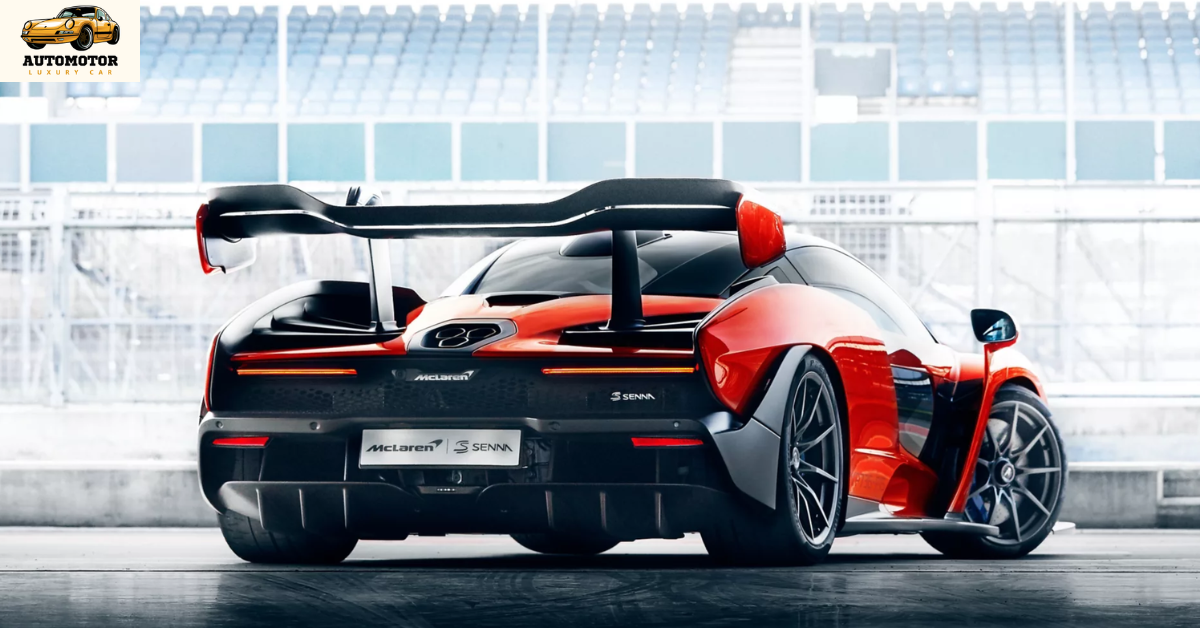When McLaren announced the Senna in 2017, it wasn’t just unveiling another hypercar. It was honoring a legend, pushing the boundaries of performance, and redefining what it means to build a car with track-first intentions. Named after the legendary Formula 1 driver Ayrton Senna, the McLaren Senna is more than a machine—it’s a tribute to one of motorsport’s greatest icons and a testament to McLaren’s relentless pursuit of speed, precision, and excellence.
A Design That Divides Opinions—but for a Reason
The Senna’s exterior is unapologetically aggressive. Every line, scoop, and fin serves a purpose. Unlike many hypercars that blend aesthetics with performance, the Senna prioritizes function. Its design is dictated by aerodynamic efficiency, not beauty.
The massive rear wing, the towering rear diffuser, and the complex front splitters all work together to create immense downforce—up to 800 kg at 250 km/h (155 mph). This aerodynamic package ensures the car sticks to the tarmac, slicing through the air with precision and poise. While some critics have called the design “ugly” or “excessive,” true enthusiasts understand: this is beauty born from purpose.
Lightweight Philosophy
The McLaren Senna is a featherweight in the world of hypercars, tipping the scales at just 1,198 kg (2,641 lbs). That’s lighter than many compact sedans—and it includes a twin-turbo V8. This is largely due to McLaren’s use of its Monocage III carbon-fiber chassis and carbon-fiber body panels, along with an obsessive focus on reducing weight wherever possible.
Even the seats were sculpted to save weight. The fixed-back carbon shells weigh just 3.35 kg (7.4 lbs) each. The glass panels in the lower portion of the dihedral doors? Optional—McLaren even offers solid panels to shave off a few extra grams.
The Heart: A Brutal, Raw Powerplant
At the core of the Senna lies a 4.0-liter twin-turbocharged V8 engine—the most powerful internal combustion engine McLaren had ever fitted to a road car at the time. Producing 800 PS (789 hp) and 800 Nm (590 lb-ft) of torque, the M840TR engine sends the Senna from 0 to 100 km/h (62 mph) in just 2.8 seconds. It reaches 200 km/h (124 mph) in 6.8 seconds and continues on to a top speed of 208 mph (335 km/h).
But what truly sets the Senna apart isn’t just its straight-line speed—it’s how it delivers that performance. The throttle response is immediate, the turbos whistle and roar with purpose, and the seven-speed dual-clutch transmission shifts with lightning precision.
Track Weapon, Street Legal
The McLaren Senna is, by all measures, a track-focused machine. Yet it remains street legal. It may not be the most comfortable ride for a daily commute—the suspension is stiff, the cabin is sparse, and there’s limited sound insulation—but it offers one of the most visceral driving experiences money can buy.
McLaren’s RaceActive Chassis Control II suspension system allows for adaptive damping, anti-roll control, and ride-height adjustment. The result? A car that feels equally at home on Silverstone as it does navigating a mountain pass.
Inside the Cockpit: Purpose Over Luxury
Inside, the McLaren Senna is minimalist and driver-focused. There are no infotainment screens cluttering the dashboard, no unnecessary trim. What you get instead is a focused layout that prioritizes driving. The steering wheel is free of buttons. The start/stop button is mounted on the roof—just like in a race car. And the portrait-oriented central screen handles everything from climate control to telemetry data.
There are only a few luxury touches—optional Alcantara or leather seats, a decent sound system, and climate control—but make no mistake: this isn’t a grand tourer. It’s a scalpel.
Ayrton Senna’s Legacy Lives On
Ayrton Senna was known for his raw talent, fearlessness, and unrelenting pursuit of perfection on the racetrack. The McLaren Senna channels those traits. It’s not a car built to coddle the driver. It demands attention, skill, and respect.
Limited to just 500 units worldwide, the Senna is a collector’s item, a rolling tribute to a legend, and a benchmark for what a track car can be when nothing is held back.
Final Thoughts
The McLaren Senna is not for everyone. It’s not designed to be comfortable, subtle, or universally appealing. But for those who crave the ultimate in performance, who want a car that connects man and machine with minimal interference, the Senna delivers in ways few others can.
